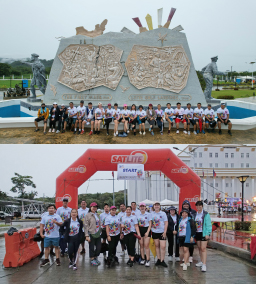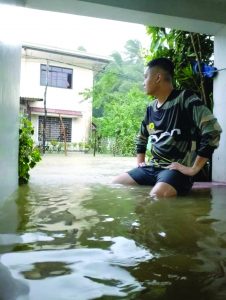
TACLOBAN CITY – About 50 representatives from various primary and secondary tourism enterprises participated in a mobile accreditation caravan organized by the regional office of the Department of Tourism (DOT-8).
The caravan, held on September 3 in Catbalogan City, included a diverse range of tourism-related businesses such as accommodation establishments, Meeting, Incentives, Conferences, and Events (MICE) facilities, travel and tour agencies, restaurants, cafes, and other food service providers.
Led by Norberto Lumbre, the DOT-8 caravan was facilitated by the Catbalogan City Tourism, Culture, Arts, and Information Office (CTCAIO) and supported by the Catbalogan City Tourism Council (CTC).
In accordance with Republic Act 9593, the accreditation of primary tourism enterprises (PTEs) is mandated, while secondary tourism enterprises are encouraged to undergo voluntary accreditation.
The Department of Interior and Local Government (DILG) also issued Memorandum Circular No. 2019-17, directing all local government units (LGUs) to ensure that PTEs are accredited by the DOT.
As part of the accreditation process, the DOT-8 team conducted on-site inspections of tourism enterprises. Following the Catbalogan event, the team is scheduled to visit Calbayog City for another mobile accreditation caravan.
DOT-accredited enterprises receive various benefits and incentives, including exemptions from the liquor ban during election periods (for accommodation and restaurant facilities), endorsements to embassies and travel trade associations, priority in DOT training programs, and other privileges such as exemptions from the Unified Vehicular Volume Reduction Program (UVVRP) of the Metro Manila Development Authority (MMDA) and endorsements to the Land Transportation Franchising and Regulatory Board (LTFRB) for the issuance of a Tourist Transport Franchise (for tourist land transport).
As of September 2, 2024, DOT-8 has issued 328 accreditations to tourism-related enterprises in the region.
In 2023, a total of 469 accreditations, with 437 granted to primary tourism establishments and 32 to secondary tourism establishments, were issued by the DOT-8.
(ROEL T.AMAZONA)





Stronger Digital Defense Needed
ASSOCIATE PROFESSOR III
Chances are we are using digital finance platform.
The prevalent use of Financial Applications is a reality that we are aware. According to a Philippine News Agency report written by Joanne Villanueva “ The Philippines now officially has six digital banks after the Bangko Sentral ng Pilipinas (BSP) recently issued Certificates of Authority (COA) to two more financial institutions, which paved the way for the latter’s full operations. The other four are Tonik Digital Bank Inc. (TONDB) and Maya Bank Inc. (MAYA), which got their COA in the first quarter of this year, and Overseas Filipino Bank Inc. (OFBank), the digital bank subsidiary of state-owned Land Bank of the Philippines (LANDBANK), and UNObank Inc. (UBI), which received their respective COA in the second quarter of the year. “
In our own mobile phones, we have GCASH and MAYA , too . We use this as our go to apps in transferring money and buying loads for our cellular phones . At times, the same app comes handy in paying utility bills including tuition fees.
On a personal note, the whole digital banking and applications has never been a problem. It made our mobile life easy and convenient.
But recently, news came to us as a warning, the digital banking and applications are vulnerable to hacking and can be a source of major problem. Many stories come as a proof to this ,the maintenance period (when one cannot access the app) is a prime example of the recalibration that the apps do to prevent the fiasco of hacking. However, the question remains, how fast can the digital banks and app adjust to the ever-evolving hackers?
Inquirer,net as written by Jasper Piad disclosed that Study Shows PH Bank Vulnerable to Hacking ! The said article is a confirmation of what ordinary Juan’s fear all along, the apps and the digital banks can be hacked. The results of our study reveal that many financial institutions are struggling to close the priority security gaps that put them at risk. Effective exposure management is key… ,” Tenable senior vice president Nigel Ng said. The firm Tenable warns us on that article of Inquirer.net .
The next question would be how can we prevent the hacking of our assets and monies in these platforms?
It seems a highly technical question that deserves an even technical answer.
As we grow our financial transactions and gain access to a wide array of digital services, we must increase our safeguards against cyber threats. Strengthening digital defenses will help safeguard the financial assets of both banks and their customers, ensuring a secure and trustworthy digital banking environment.
We need to have stronger and if I may say pressing and sure defense on those digital assets.